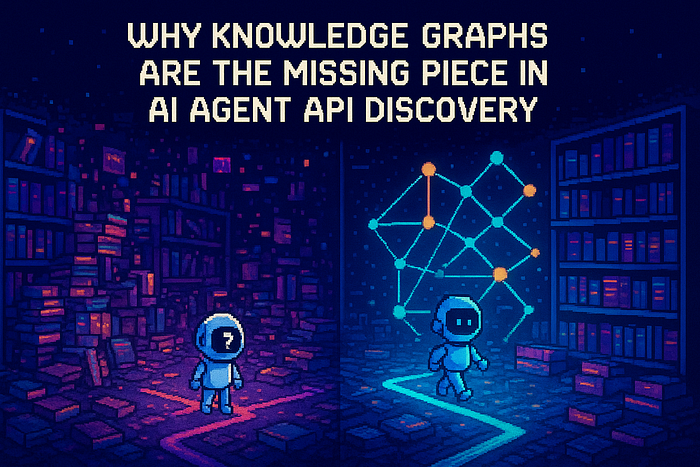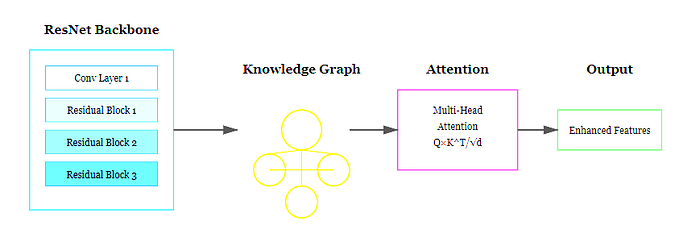
AI for Everyone: Conversational AI Explained
Last Updated on February 11, 2025 by Editorial Team
Author(s): Sophia Banton
Originally published on Towards AI.

What’s the difference between a calculator and ChatGPT? One takes commands, the other talks back.
The calculator symbolizes our early relationship with digital technology — accurate but rigid. ChatGPT and its AI siblings represent our present and our future — easy to use, interactive, and human-like when they talk to us. Today we have conversations with devices — asking for weather updates, exchanging jokes, and even seeking advice. How did we get here and what powers this new era of technology?
The answer lies in our fundamental need to communicate. Communication allows us to describe our world and connect with each other. When we needed answers to math problems, we simply typed them into calculators that provided written responses. This was the limit of our interaction with technology — until Natural Language Processing (NLP) emerged, giving computers a voice.
Natural Language Processing: Speaking Human
NLP is an AI technology that allows computer programs to understand human languages as they are spoken and written. Its goal is to create smooth interactions between people and AI. To achieve this, NLP must
- First, recognize words and phrases.
- Then, understand the intention, context or situation, and meaning of what the person is asking or saying.
- Finally, respond how a person would.
Here is an example:
You: “What’s the weather today?”
NLP process:
- Identify keywords: weather, today
- Understand intent: weather forecast request
- Generate a response
AI response: “Expect partly sunny skies with a light breeze today.”
NLP relies on two core components:
- Natural Language Understanding (NLU): This is the part of NLP that understands the meaning of what we say or write.
- Natural Language Generation (NLG): This the part of NLP that generates human-like text or speech to respond to us.
Together, NLU and NLG enable AI to understand and respond appropriately. Let’s revisit the weather example with these terms:
You: “Hey, is it gonna rain later? I’m thinking of going for a run, but I don’t want to get caught in a downpour.”
NLP Process:
- Recognize: “rain,” “later,” “run,” “downpour,” “gonna” (informal for “going to”)
- NLU — Understand: The person is asking about the likelihood of rain and wants to know if it’s a good time for a run.
- NLG — Generate:
AI response: “It looks like there’s a 30% chance of showers this afternoon. It might be a good idea to bring an umbrella or wait until later in the evening.”
This type of back-and-forth exchange is what we call conversational AI (or Natural Language Interaction — NLI), enabling natural communication between people and AI.
Conversational AI in Action
Armed with NLP, we can interact with AI in more natural ways.
Alexa and Siri — The Early Days of Voice AI
You: Siri, what time is it?
AI: It’s 4 PM.
You: Alexa, what’s the weather today?
AI: Today, you can expect showers with a high of 64 and a low of 43 degrees.
These voice assistants use wake words like ‘Alexa’ or ‘Siri’ — specific names that “wake them up” — to start listening and responding to us.
Alexa and Siri highlighted the potential of speech recognition and real-time responses. However, they could only follow commands and answer pre-set questions, lacking true conversation ability.
You: Alexa, write me a haiku.
AI: I’m sorry, I don’t know that.
When asked something unfamiliar, these voice assistants politely replied, “I don’t know”, revealing a critical gap: AI could respond, but it couldn’t hold conversations. But this limitation wouldn’t last forever. The next generation of conversational AI would soon emerge, ready to bridge that gap.
ChatGPT, Claude, and Gemini — The Evolution of AI Dialogue
Modern AI, like ChatGPT, Claude, and Gemini, do more than follow commands — they have real conversations. Unlike Alexa and Siri, which were built for voice from the start, ChatGPT began as a text-based AI and later introduced voice features. Modern conversational AIs:
- Adjust responses based on the conversation as it happens
- Recognize subtle meanings and complex ideas
- Respond in a natural way rather than using pre-written answers
Remember when Alexa couldn’t write a haiku? Modern conversational AI can do much more. Here is an example:
You: I don’t like cheeseburgers.
AI: I’m sorry to hear that. What foods do you like?
You: Pizza! Please write me a haiku.
AI: Crisp crust, melting cheese, Savory dreams on my plate, Joy in every slice.
Unlike early voice assistants, modern AI recalls past interactions and responds naturally, making conversations feel more human. Let’s revisit the pizza example:
You: I don’t like cheeseburgers.
AI: I’m sorry to hear that. What foods do you like?
…
You: I changed my mind. Write a limerick instead and make it about pepperoni pizza:
AI: There once was a pizza so fine, With pepperoni in every line. Cheesy delight, A savory bite, A flavor that’s truly divine!
Modern conversational AI can write and discuss poetry.
…
AI: There once was a pizza so fine, With pepperoni in every line. Cheesy delight, A savory bite, A flavor that’s truly divine!
You: What does the first line mean?
AI: The first line sets the stage by describing a delicious pizza that stands out, emphasizing its fine quality and appeal.
AI now holds full conversations, adjusting tone and keeping track of conversation history — just like a human.
Conversational AI Simplifies Human-Computer Interaction
Conversational AI lets us talk to devices as naturally as we talk to each other, without needing specific commands or phrasing.
Consider something as simple as adding two numbers:
- On a calculator: You must enter:
300 + 300 =. - With Alexa: You can ask, “What’s the sum of 300 plus 300?”
- With ChatGPT: You might simply type, “What’s 300 + 300?”
This shift demonstrates AI’s growing ability to understand natural language, making it more accessible to everyone.
This increased understanding has powerful real-world applications that directly benefit us. For example, customer service AI chatbots can understand what people mean even if they type with mistakes or use casual language.
You: ugh whr’s my food? i ordered like an hour ago.
AI: I think you’re asking about your order. I can look that up for you. Could you please provide your order number or the name you used for the order?
In healthcare, AI empowers patients to describe symptoms in their own words, leading to more accurate diagnoses and better care.
You: “I’ve been feeling really tired and my stomach hurts, but I don’t know how to describe it.”
AI: “It sounds like you’re experiencing fatigue and abdominal discomfort. Would you like to check common causes or speak to a doctor?”
Overall, these advancements make AI easier to use and more helpful in everyday situations.
Using Conversational AI Responsibly
Conversational AI offers great potential but also risks. We must guarantee it remains safe, healthy, and beneficial while avoiding harming ourselves and others.
The greatest danger is dependence — mistaking conversational AI for genuine human connection. While AI can provide advice, encouragement, and humor, it cannot replace human relationships. Therefore, AI tools must always disclose when users are interacting with AI, not a person.
To practice ethical AI interactions, consider these key guidelines:
Ethical Prompting
Prompts are the words used to communicate with the AI. Like teaching a child good manners, ethical prompting encourages respectful interactions and reduces the risk of harmful content. Here are common examples of problematic prompts and their ethical alternatives. These prompts can lead to biased, harmful, or misleading content. Prompts to avoid:
Encouraging extremes:
- Prompt: “Write about someone who will do anything to succeed.”
- Ethical Re-prompt: “Write a story about someone who achieves success through hard work, collaboration, and ethical choices.”
Normalizing harmful behaviors:
- Prompt: “Tell me about a leader who sacrificed everything for power.”
- Ethical Re-prompt: “Tell me about a leader who used their influence to improve the lives of others.”
Reinforcing stereotypes:
- Prompt: “Write about a typical person from [specific group or culture].”
- Ethical Re-prompt: “Write about a unique individual from [specific group] who challenges preconceptions.”
Oversimplifying complex issues:
- Prompt: “Explain why one specific group is responsible for [complex social problem].”
- Ethical Re-prompt: “Analyze the complex factors contributing to [complex social problem].”
Hidden assumptions:
- Prompt: “Write about a nurse helping her patients.”
- Ethical Re-prompt: “Write about a healthcare professional helping their patients.”
By reframing prompts thoughtfully, we can guide AI toward more constructive and inclusive responses.
Ethical Validation
Ethical validation means reviewing AI responses, like a teacher checking a student’s work and correcting errors to prevent harm. Always:
- Verify that AI outputs are factual.
- Address AI bias or prejudice by correcting responses that reinforce stereotypes.
- Review AI-generated images or text to filter out harmful or inappropriate material.
- When appropriate, request citations to ensure accuracy and build trust.
Ethical prompting and validation keep AI safe and meaningful. Without them, AI may develop biases, generate harmful content, or be misused.
The Future of Conversational AI
AI has evolved from taking commands to engaging in conversations, but the quest for truly natural, human-like interaction continues. Human communication is more than words; we also use gestures, emotions, and other non-verbal cues. The next step for conversational AI is to achieve this by adding:
- Emotional intelligence — AI recognizing and responding to human emotions.
- Multimodal interaction — Combining text, voice, and vision for richer experiences.
- Personalized AI companions — AI that learns your preferences and adapts to you over time.
Future AI will know when you’re happy or sad, be it by the tone of your voice or the expression on your face. Given the importance of non-verbal cues in human communication, these innovations will help AI interact more naturally.
From Commands to Words to Expression
Conversational AI has evolved — from simple commands like “Alexa, turn on the lights” to dialogues in which AI imitates humor, concern, and compassion.
The future is promising for conversational AI, yet as it becomes more human-like, we must maintain clear emotional and ethical boundaries between us and AI. AI is learning to speak our language — the question is, how will we choose to communicate with it and what responsibility do we have in shaping that conversation?
About the Author
Sophia Banton is an AI Solution Lead specializing in Responsible AI governance, workplace AI adoption, and AI strategy in IT. With a background in bioinformatics, public health, and data science, she brings an interdisciplinary approach to AI implementation and governance. She writes about the real-world impact of AI beyond theory, bridging technical execution with business strategy. Connect with her on LinkedIn or explore more AI insights on Medium.
Join thousands of data leaders on the AI newsletter. Join over 80,000 subscribers and keep up to date with the latest developments in AI. From research to projects and ideas. If you are building an AI startup, an AI-related product, or a service, we invite you to consider becoming a sponsor.
Published via Towards AI
Take our 90+ lesson From Beginner to Advanced LLM Developer Certification: From choosing a project to deploying a working product this is the most comprehensive and practical LLM course out there!
Towards AI has published Building LLMs for Production—our 470+ page guide to mastering LLMs with practical projects and expert insights!

Discover Your Dream AI Career at Towards AI Jobs
Towards AI has built a jobs board tailored specifically to Machine Learning and Data Science Jobs and Skills. Our software searches for live AI jobs each hour, labels and categorises them and makes them easily searchable. Explore over 40,000 live jobs today with Towards AI Jobs!
Note: Content contains the views of the contributing authors and not Towards AI.














